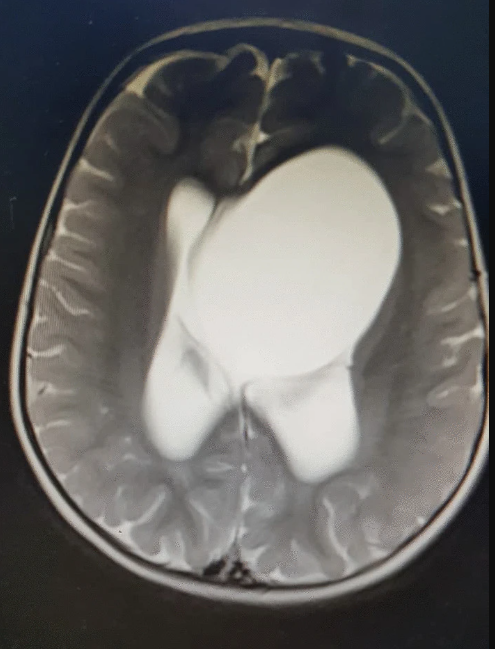Clinical Presentation
A 1.5-year-old girl presented to the clinic with complaints of gradually increasing head nodding for 3 months. These head-nodding movements were aggravated by walking and stress. Furthermore, they were relieved when the little girl was concentrating on a task while sleeping. However, the rest of her history was non-significant. Additionally, her mother did not give any abnormal occurrences during the pregnancy and her birth.
Examination
On examination, the child was well-oriented to time and space, and alert with normal cognitive abilities. Moreover, her neurological examination and her growth chart were also normal. Her weight was 8 kg, height 72 cm and head circumference 44.5 cm.
Investigations
The doctors ordered certain baselines, which included a complete blood count, liver and kidney function tests and endocrine function tests. However, all of these tests were normal.
To rule out other causes, the doctors performed an ophthalmological examination which demonstrated normal eye movements with no papilledema. Furthermore, a cranial MRI was done, which showed a large left-hemispheric cystic process with a midline shift. It showed a thin-walled suprasellar arachnoid cyst (3x5x7 cm) obstructing Monroe’s Foramen causing hydrocephalus. Thus, based on the clinical presentation and MRI findings, the doctors made a diagnosis of the suprasellar arachnoid cyst with Bobble Head Doll Syndrome.
Management
The doctors performed surgery for the arachnoid cyst by endoscopic cystoventriculostomy and cystocisternostomy. This operation was done via a burr hole in the right side of the skull. An endoscopic trocar was inserted, showing the CSF under high pressure. The cyst was identified and a fenestration was made. The cystic fluid was clear and under high pressure. At the end of the surgery, normal flow in the ventricles was ensured with intact remaining membranes.
Follow-up
The surgery was successful with no post-op complications. The doctors had a follow-up with the patient at 6 weeks. There was a drastic decrease in the frequency and intensity of her head nodding. Moreover, at 6 months follow-up head nodding had completely disappeared.
Bobble-Head Doll Syndrome
Bobblehead doll syndrome (BHDS) is a rare disorder that usually affects children aged less than 5 years. It presents with continuous or episodic to-and-fro movements of the head (like head nodding). This usually occurs at a frequency of 2-3 Hz. These movements can be aggravated by certain situations and are completely absent during sleep.
The most common cause of this syndrome is a lesion in or around the third ventricle, which causes ventricular dilatation. Moreover, the most common of these lesions are suprasellar arachnoid, third ventricular tumours, or aqueductal stenosis. Other causes include cysts of the cavum pellucidum and interpositum, developmental cerebellar disorders, communicating hydrocephalus, trapped fourth ventricle, and third ventricular choroid plexus papilloma.
Clinical presentations are developmental delay, macrocephaly, ataxia, optic disc pallor or atrophy, tremors, hyperreflexia, endocrine disorders, headache, and vomiting. There are two main possible theories which explain the mechanism of the BHDS. The first hypothesis attributes this disorder to dorsomedial compression caused by an abnormal flow of fluids towards the medial side of the thalamic nuclei. The second hypothesis, states that an adopted motor automatism causes decreased pressure in the cyst.
Investigations used to assess this disorder include computed axial tomography (CT) or magnetic resonance imaging (MRI), without or with contrast.
The management of BHDS depends on the lesion causing the rise in pressure and thus the symptoms. However, it is mostly treated surgically. Previously it was managed with open marsupialization, permanent ventriculoperitoneal or cystoperitoneal drainage. However, current procedures include neuroendoscopic interventions with ventriculocystocisternostomy. These are particularly successful for arachnoid cysts as they are less expensive and less invasive.




